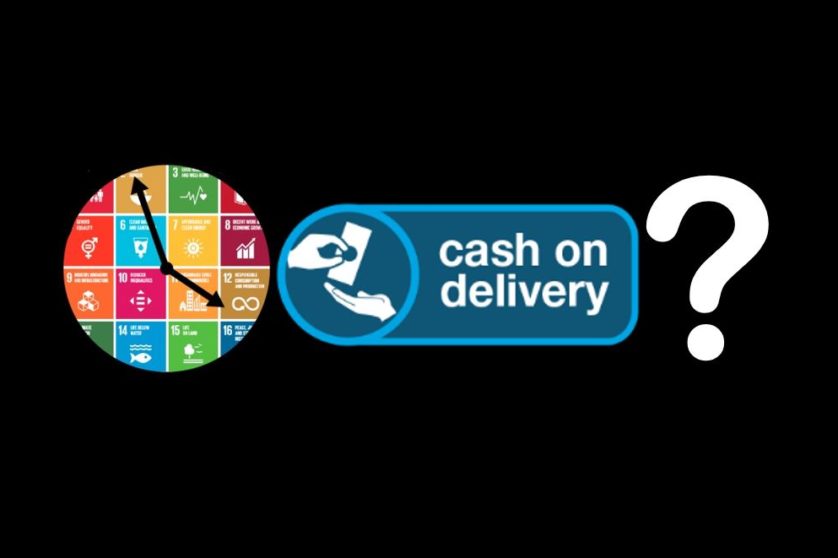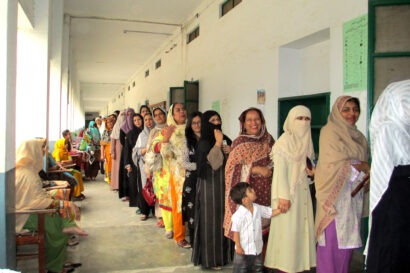Nancy Lee from the Centre for Global Development (CGD) recently published a piece arguing for a “surge in support” for domestic revenue mobilisation in low income countries and a major shift in how donor support for domestic revenue mobilisation is organised. It is an intriguing proposal, but one which is also likely to face very substantial practical hurdles. We aim here to delve more deeply into those potential challenges, to inform further exploration of the ideas.
The Proposal
Current donor assistance for domestic revenue raising is dominated by project-based lending. Funds and technical assistance are provided to support pre-agreed reform efforts, with assistance continuing as long as important objectives are being met. Lee, by contrast, proposes a shift toward results-based funding, of the kind variously referred to as, for example, Program-for-Results (World Bank) or Cash on Delivery (CGD). The core idea is that, working through multilateral development banks, donors should provide recipients with financial incentives to deliver results – and to find the best ways of doing that effectively – by agreeing to hand over the cash once pre-agreed targets are verifiably achieved. This modality first entered into the international development business in a major way with the establishment of the Millennium Challenge Fund and the Millennium Challenge Corporation by the US Congress in 2004.
The attraction of such an approach in relation to domestic resource mobilisation lies in part in the fact that, as we have written elsewhere, obstacles to tax reform in low income countries (LICs) are often much more political than technical or financial. Examples include more effective collection, management and sharing of data within tax agencies; greater transparency around the granting of tax exemptions; and improved collection of tax arrears. In such cases, it is determined government action that is required, and not primarily money or technical expertise. It is in precisely these kinds of circumstances that results-based funding from donors might make sense.
However, as Lee notes, the results-based funding approach also confronts some significant practical challenges. We suspect that these challenges may be larger than they at first appear, and will require significant attention before the proposal becomes practicable. We highlight three broad clusters of challenges.
Problems of Measurement and Monitoring
Lee reasonably proposes that the ratio of tax collection to GDP (tax-to-GDP ratio) would likely be used to measure progress in revenue raising. However, as she notes “A rigorous evaluation of whether tax revenue outcomes are achieved—perhaps by independent private auditors …. would be essential”. This measurement and monitoring problem may, however, be larger than it at first appears, for several reasons:
- The accuracy of tax to GDP ratios is dependent on accurate measurement of both tax revenue and GDP. Official tax to GDP ratios may increase because of improved tax performance, but also because of the growing underestimation of GDP. And the latter is not an abstract concern. Over the past decade there have been a host of cases, led by Ghana and Nigeria, in which what appeared to be rapidly rising tax-to-GDP ratios were later revealed to have been driven by growing underestimation of GDP.
- Almost all tax agencies in low income countries are managed, evaluated and often rewarded by their governments almost entirely on the basis of a single statistic: whether they meet their annual collection targets. Many are already quite skilled at “gaming” those targets. A major tool they use is ‘cooperation’ with large taxpayers, especially banks, to shift collections across years. They collect what are in effect advance payments if they are at risk of not meeting targets, and defer liabilities if they are at risk of over-achieving. There is similarly considerable scope to time the collection of tax arrears and the payment of VAT refunds. Intensive, intrusive and costly external monitoring might be required to discourage governments from becoming complicit in these games so that they too can be successful in meeting any revenue collection targets they might agree with donors and multilateral development banks.
- We need agreement on how ‘tax revenue’ is defined. The major issue is the distinction between ‘tax revenue’ and ‘non-tax revenue’. The two collectively amount to ‘total revenue’. Discussion of this distinction, including in the context of financing the Sustainable Development Goals, is often quite sloppy. The difference between ‘tax revenue’ and ‘total revenue’ can be substantial. Typically, ‘tax revenue’ is between 80% and 90% of total revenue’. However, the actual practices of allocating revenues between the ‘tax revenue’ and ‘non-tax revenue’ for accounting purposes are often quite murky and diverse. The problems arise especially in respect of collection of social security contributions, some local revenue sources and, much more important for some low-income countries, revenues collected from natural resource extraction activities. Nominally, royalty payments from a mining company to government are ‘non-tax revenue’, while corporate income taxes are ‘tax revenue’. Again, there is a wide scope for taxpayers and tax collectors to collude to game targets. Similar issues may potentially arise around local government revenue collection: whether local collection should be included in tax collection figures and, if not, how to ensure that central governments do not seek to lay increasing claim to local revenues in an effort to meet national targets. If Nancy Lee’s proposal is to be practicable, donors and recipients would need to spend time and resources defining clearly what is to be considered as ‘allowable’ revenue and then monitoring performance to guard against shifting between categories.
- Year to year changes in tax collection are driven not only by government efforts. Business cycles, and world market prices for commodity exports also have a big impact. When the economy is doing well tax revenue naturally increases, while the reverse is true during recessions. Donors may reasonably fear the potential for government revenues to increase substantially – and trigger large aid disbursements – despite the absence of any meaningful tax reform. Meanwhile recipient governments may fear implementing significant tax reform, but still falling short of disbursement targets owing to an economic downturn. It is hard to imagine a sustainable arrangement that did not include some buffering agreement over the effects of business cycles on revenues. But modelling this is an inexact science. Again, the implications include the need for prior analytic work and considerable negotiation before credible agreements could be struck.
Risks of Coercive Taxation
Most existing research suggests that, when tax collectors face short-term pressures or incentives to meet demanding revenue targets, they are likely to squeeze their existing, more accessible, ‘juicy’ sources of revenue, with limited regard for the long term adverse effects on tax morale, investment, or incentives for taxpayers to try to disappear into the informal sector. They may resort to more coercive, sometimes extra-legal, approaches to extracting additional revenue. There is a risk that demanding short-term revenue targets create incentives for revenue authorities to move away from rational-legal processes and impartial application of the law, with potentially substantial adverse long-term consequences. This is true of any use of tax-to-GDP ratios as program targets, but is likely to be accentuated where meeting targets unlocks large amounts of untied foreign funding.
One potential outcome of aggressive hunting for short-term revenue increases is increased reliance on more regressive taxes that might exacerbate poverty. Expanding collection of the VAT, excise taxes or trade taxes may be easier, technically and politically, over the short term than strengthening income and property taxes. Nancy Lee anticipates this problem, and suggests that:
“It would be reasonable to make eligibility for the outcomes-based loans depend on the development of a larger fiscal framework that meets equity and poverty-reduction criteria—at the very least barring approaches that worsen poverty after taxes and social transfers”
This sounds excellent. But it may be hard to translate such broad principles into practical guidelines. It would almost certainly be necessary to do this country by country. Because increases in tax collection frequently come from better enforcement of existing taxes, estimating the distributional consequences of those increases is likely to require detailed data and be analytically challenging. Meanwhile, defining an acceptable level of progressivity poses its own problems. One solution could lie in focusing on more progressive taxes on income and property, but this is more intrusive and does not necessarily address other concerns about coercive and arbitrary practices in targeting some taxpayers rather than others in seeking to meet targets.
Funding
Nancy Lee suggests that the cost of implementing her proposal “need not be overly large.” This may underestimate the nature of the funding challenges.
Might there emerge a sufficiently large, influential and credible group of donors whose commitment to fund such a programme would be sufficient to motivate the governments of low income countries to show serious interest? One reason for caution is that we have long known that aid donors have limited credibility and, in some cases, short attention spans. Aid is the least predictable source of funding for governments of low income countries. Recall that the Millennium Challenge Fund was launched in 2004 amid great enthusiasm about the prospects for performance-based aid. Experience since then, with the Fund itself and more broadly, shows that the limited credibility and predictability of aid donors is itself a major obstacle.
A related reason for caution in this case is that signing up to a large-scale programme of this nature would require aid donors collectively either to increase total aid or divert considerable amounts from other uses.
What are the external funding requirements? Nancy Lee suggests that, to motivate recipient governments adequately, they might need to equal half the additional revenues collected by recipient governments. This sounds plausible. However, it implies very large commitments relative to current foreign assistance for tax-related activities. Lee reports that in 2014 official development assistance (ODA) for tax capacity building across all developing countries is estimated to have been about $100 million[1], only a portion of which will have gone to low income countries. By contrast, if donors were to offer performance-related payments equal 0.5% of GDP (half of a 1% increase in the tax-to-GDP ratio) for all low income countries, they would be committing to contributing about $2.5 billion in ODA if targets are achieved.[2] Given that revenue reform is intrinsically a slow process, donors would need to make strong long-term commitments.
Whether or not there is a sufficiently committed group of donors to fund such an effort – and whether that would be the best use of such funds – seems at best very uncertain. One could, of course, imagine the more selective use of such programs, dependent on careful thinking about when and where such an approach might be most useful.
Conclusions
Nothing we say here implies that the approach advocated by Nancy Lee should be ruled out of consideration. It is in principle very attractive. Exploring new approaches to supporting the strengthening of tax systems is much needed, particularly in areas in which strong political resistance has led traditional aid programs to regularly under-perform. We are pointing out some of the main likely implementation problems. At the very least, there are likely high transactions costs in preparing, negotiating, monitoring and perhaps even in refereeing implementation. This is going to take time. If it is implemented, this is likely to begin on a rather small scale.
[1] 0.10% of all ODA
[2] The World Bank estimated the aggregate GDP of low income countries in 2016 at slightly more than US$500 billion.



